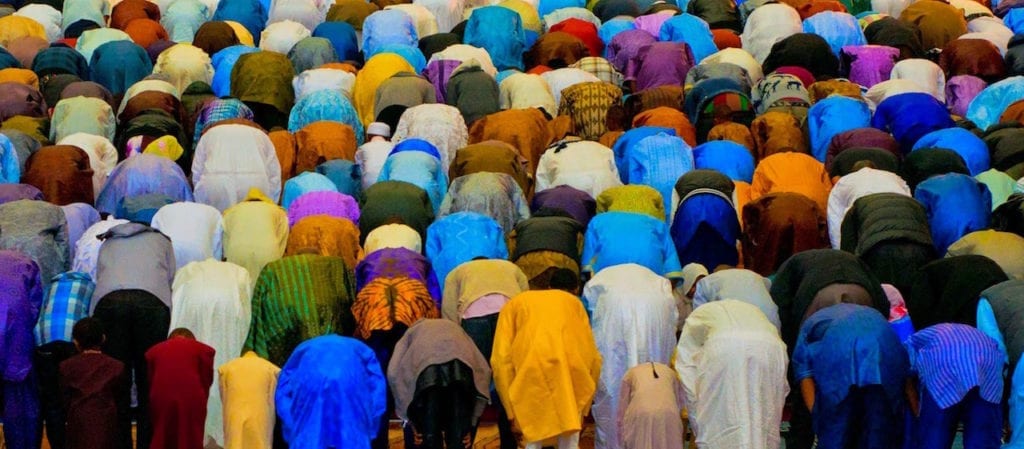Aged just 24, Khadija Saye died tragically young in the horrific fire in West London’s Grenfell Tower on 14 June – a tragedy which has cut short a life already touched by greatness.
Born in London, Saye lived and worked on the 20th floor in Grenfell Tower with her Gambian mother, Mary Mendy (who is also missing, and presumed dead). Saye was educated locally until age 16, when she won a full scholarship to the prestigious Rugby School; she went on to take a BA in photography at UCA Farnham, where she started to make work on identity and her Gambian heritage. She began documenting Grenfell Tower while still a student, for example; her final series, for her graduation in 2013, looked at Afro-Caribbean hairstyles and was titled Crowned.
After college Saye found a mentor in Nicola Green, the portrait artist who is married to Tottenham MP David Lammy; by May this year she had been selected to show her series Dwelling: in this space we breathe in the Diaspora Pavilion during the Venice Biennale, alongside well-established artists such as Isaac Julien, Yinka Shonibare, Hew Locke, Barbara Walker, Joy Gregory and Ellen Gallagher (and organised by International Curators Forum and UAL University of the Arts London). Created with the help of artist Almudena Romero, Dwelling: in this space we breathe depicts traditional Gambian spiritual practices.
“It’s been a real journey, but mama, I’m an artist exhibiting in Venice and the blessings are abundant!” Saye Tweeted on 10 May. On 13 June she met with Andrew Nairne, the director of the Kettle’s Yard gallery, who had seen her work in Venice; not knowing she worked at home, he had originally suggested he come to her studio.

“But fast forward to the end of her studies and she was a confident photographer, showing her own work at the Truman Brewery. Her final major project, Crowned, really engaged with those themes of identity that captured her interest as an artist, celebrating hair and capturing those women around her. The portraits were taken in a makeshift home studio on the 20th floor; I recall with tenderness the tutorials during the making of this work, Khadija would burst in with work prints and talk with joy as she recounted her mother’s nervousn

“Had it not been for this terrible tragedy, solo shows and museum exhibitions would not have been too far away. Hers was a very special talent, taken away from us too soon. She will be sorely missed by all those who knew and loved her.”
“I’m crushed by Khadija’s tragic and untimely death, and absolutely outraged by the horrific circumstances by which it occurred,” says Anthony Luvera, course director of photography at Coventry University and a former lecturer at UCA Farnham. “Working closely with Khadija throughout the three years of her studies at UCA Farnham, and then, later, redefining our student-teacher relationship to one of friendship, I relished the qualities she possessed – qualities that made her stand out in such a way that her work was celebrated at Venice this year.
“Her warm and genuine interest and connection to other people’s stories, particularly those who come from marginalised backgrounds or immigrant origins; the astuteness of her questioning; her ability to clearly and creatively express herself; the gentleness of her presence; and, most especially, the brightness of her laughter – Khadija’s life, her talents and the work she left behind, should continue to be celebrated widely.
“She was such a bright, positive and talented young woman, and I am proud to have taught Khadija and witnessed her blossoming. I am heartbroken that she should be taken away so abruptly.”

“As well as mentoring her over those three years, she also worked in my studio for a year, and there is nobody I saw Khadija come across who wasn’t touched by her kindness, consideration and soulful response to every situation. I watched her rise from a shining light of emerging talent, who was struggling to get her work into the world, to a star at the crest of a wave of international success. It is impossible to believe that such a positive force of good energy is gone from this world. I am absolutely devastated.”
“It was an absolute pleasure working with Khadija in preparation for the Diaspora Pavilion at Venice, watching the progression of her work and seeing her excitement and modesty,” says Rhiannon Stanford, who works at Metro Imaging and helped Saye create the scans of the tintypes shown in Venice. “It was lovely to see her get such wonderful feedback for her newest works on her Gambian heritage. She will be missed greatly within our community.”
The fire at Grenfell Tower was first reported just before 1am on 14 June, and quickly consumed the 24-storey block from the second floor up. 45 fire engines and more than 200 firefighters tackled the blaze, which was finally brought under control 24 hours later. It is thought that around 600 people lived in the tower; at the time of writing, five have been confirmed dead, and 74 are missing presumed dead. 65 were rescued by firefighters, and 74 have been confirmed as being in hospital.
The cause of the fire has not yet been proven, but its fast spread and high death toll is already extremely controversial. The residents’ organisation Grenfell Action Group had repeatedly expressed concern about fire safety in the block since 2013, warning the management in November 2016 that only a catastrophic fire would finally force them to treat fire precautions and maintenance of fire-related systems properly.
Nicola Green, Dave Lewis and Ingrid Swenson have set up the Khadija Saye Memorial Fund to support young artists like Saye to help them realise their potential. For more information and to donate, visit https://www.justgiving.com/crowdfunding/khadija-saye-memorial-fund
Diaspora Pavilion is on show until 26 November 2017 at the Palazzo Pisani S. Marina in Venice. www.internationalcuratorsforum.org www.sayephotography.co.uk















